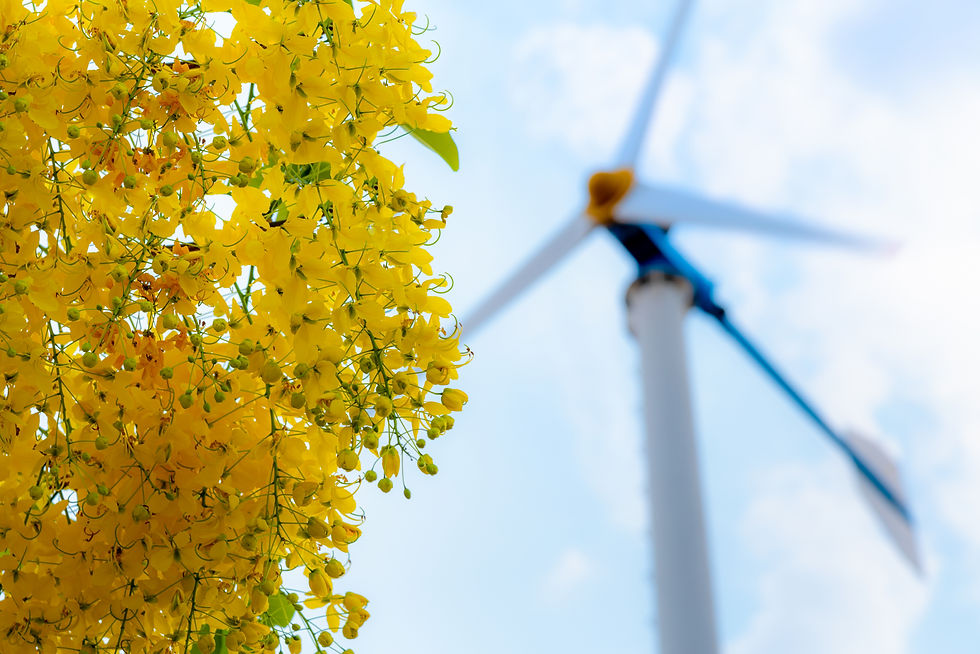Electerro's clean-energy legacy is laid out in magnolia leaves
- psuce3
- Jun 10, 2021
- 2 min read

It is widely understood that a clean energy transition relies on an energy sector that generates electricity from clean, renewable sources, like wind and solar. However, in the urgent drive toward a more sustainable economy, less well known are the hazardous impacts of clean energy development to human life and the ecosystems where they reside.
If Electerro has anything to do with it, there will be a new, powerful tool to answer the sense of urgency surrounding climate change with a specially designed apparatus that harvests clean energy without the harmful health impacts of clean energy: a magnolia.
“It's really common to drive past clean energy systems like wind turbines and solar panels and think, ‘Wow, those look really cool,’” said Hannah Wolf, an undergraduate in renewable energy engineering at Oregon Institute of Technology and team leader for Electerro. “But are they actually good for the environment?”
This divisive question has generated controversy, especially in communities most heavily impacted by clean energy development. On the one hand, without a clean energy transition, the effects of climate change will continue to spiral toward an uninhabitable planet.
On the other hand, wind turbines often claim the lives of migratory organisms, especially birds, and solar panels expose their environment to heavy chemical hazards like zinc, silver, copper and silica as they degrade. Eventually, these chemicals find their way into the water supply.
“This poses a really large problem within agricultural communities and communities who rely on aquifers, because once this water is contaminated, there's no going back,” Wolf said.
Part of a team that will compete in this year’s Invent Oregon Collegiate Challenge, Electerro has designed a structure similar to a tree. Armed with photovoltaic leaves that are architecturally similar to magnolia leaves and topped with a vertical access wind turbine, Electerro has designed an energy-generating apparatus whose impact promises a slimmer impact on its environment and fewer dangerous health consequences to what is, for many observers, a requirement for a livable planet.
“We are on a clean energy movement,” said Wolf. “We are so happy to know that we are moving towards clean energy resources. But we need to remember that renewable energy is meant to be clean for the environment.”
It’s a challenge easier said than done. In order to design an apparatus more aesthetically pleasing than the bladed behemoths that dot the Columbia Plateau, the Electerro team had to make sacrifices. Most importantly, the arrays of solar panels could only generate about two kilowatt hours of output. Likewise, it doesn’t have the same apparent yield as, say, a combustive energy source.
But to the Electerro team, it’s far better than the old ways of generating power. “We always have to remember with clean energy that once you buy the actual product, it's free. Once you have that initial investment, the energy that you're getting out of the resource is free, unlike combustion engines.”
“We have to keep in mind that our roots lie here on Earth,” said Mario Segura, a junior at OIT in mechanical engineering with an emphasis on robotics controls and automation. “And so with that perspective, we want to make sure we have an earth that is livable.”
That, the team says, is paramount.
“Unlike our competitors, we're not looking just for a product,” said Wolf. “We're working to start a legacy.”









Comments